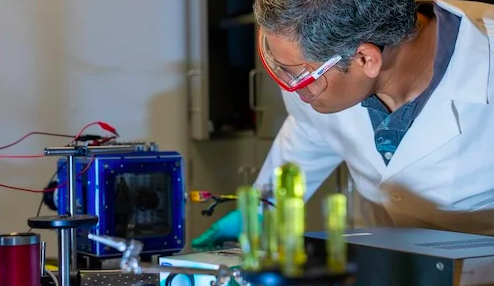
Researchers at Rice University have developed a groundbreaking thermal emitter for thermophotovoltaic (TPV) systems, achieving over 60% efficiency in converting heat into electricity. This innovation addresses the significant issue of waste heat recovery, which costs the U.S. economy over $200 billion annually due to inefficiencies in industrial processes. The study, led by Gururaj Naik and co-authored by Ciril Samuel Prasad, highlights the potential of TPV systems to effectively harness waste heat and contribute to renewable energy growth. The findings were published in the journal npj Nanophotonics on November 24, 2024 [d8f7633d].
The development of this thermal emitter marks a significant advancement in the field of energy efficiency, particularly in the context of thermophotovoltaic technology. TPV systems operate by converting thermal radiation into electricity, making them a promising solution for utilizing excess heat generated in various industrial applications. By improving the efficiency of these systems, the research team aims to enhance the viability of renewable energy sources and reduce overall energy waste [d8f7633d].
This research aligns with ongoing efforts to innovate within the renewable energy sector, where maximizing efficiency is crucial for sustainable development. As industries continue to seek ways to minimize waste and improve energy conversion processes, the findings from Rice University could pave the way for more effective energy solutions in the future [d8f7633d].